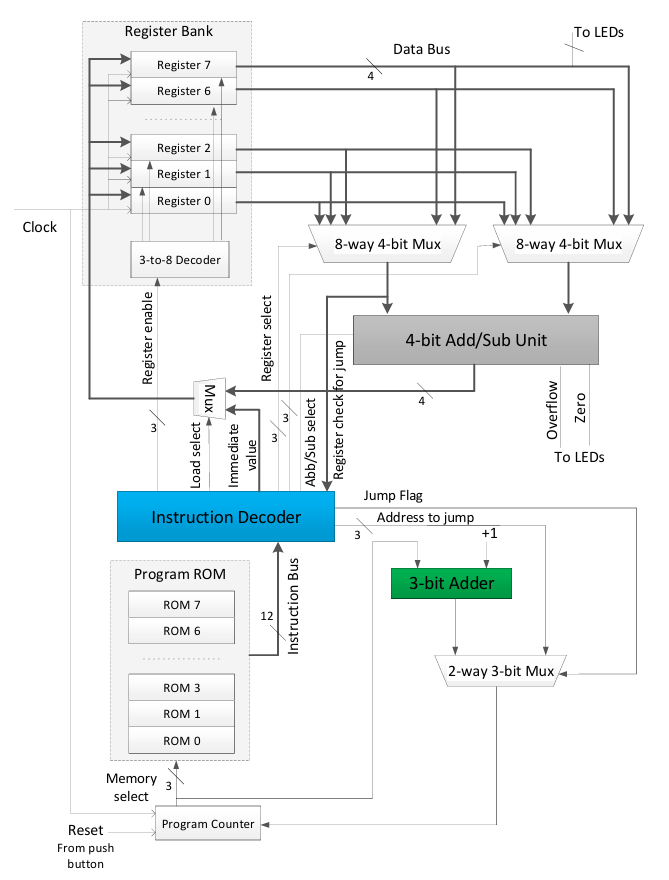4-bit Nano Processor

Project Overview
The 4-bit NanoProcessor was developed as part of our coursework in the Department of Computer Science & Engineering at the University of Moratuwa. This project provided a significant learning experience by immersing us in the intricacies of hardware design and VHDL programming using Xilinx Vivado. Our NanoProcessor, built on the Basys 3 FPGA board, demonstrates a compact yet powerful architecture that serves educational purposes effectively.
A key feature of our NanoProcessor is its reprogrammability using machine language. This capability not only enhances the flexibility of the processor but also introduces a dynamic element to the learning process, allowing users to modify and adapt the processor’s functionality directly through machine-level instructions. This innovation marks a departure from traditional fixed-function processors, offering a versatile tool for both teaching and research in computer engineering.
The project involved extensive collaboration and iteration, focusing on achieving a functional and efficient processor design. The Basys 3 board’s robust features and our diligent development process culminated in a NanoProcessor that stands out for its educational value and technical sophistication.

My Contributions
In this project, my contributions spanned both development and implementation aspects. I worked closely with my teammate, Sanjula Gathsara, to design and develop the processor. My primary responsibilities included:
- Coding in VHDL to implement the processor’s architecture.
- Testing the processor’s functionality to ensure it met the project requirements.
- Collaborating on the integration of the reprogramming feature using machine language.
GitHub Repository
Explore the project on GitHub: NanoProcessor
Project Report
For a detailed understanding of our project, you can view our project report: NanoProcessor Project Report
Skills: VHDL · Xilinx Vivado · Hardware Development · Team Collaboration
